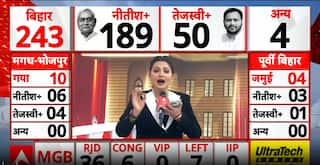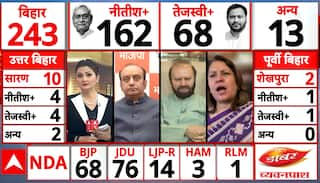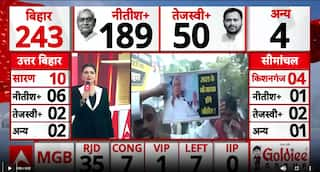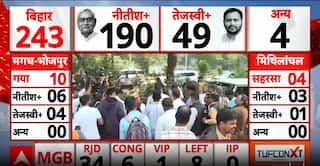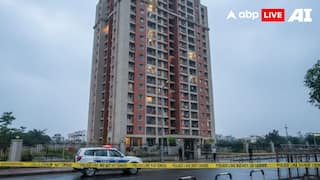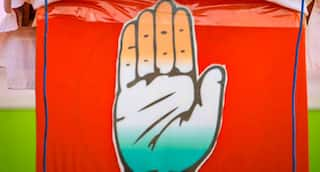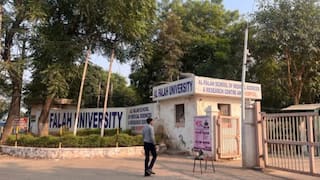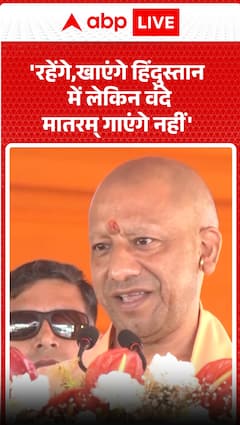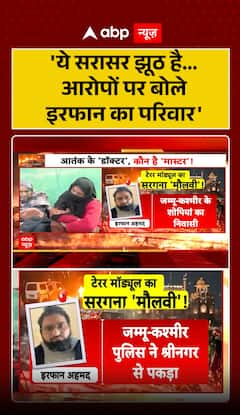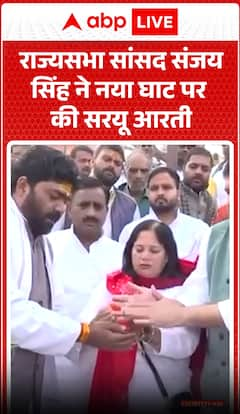(Source: ECI | ABP NEWS)
Signs Of Churning Within TMC In Meghalaya, BJP Goes Into Poll Mode In Tripura Ahead Of 2024

This week BJP leader and Meghalaya cabinet minister Alexander Laloo Hek said he met with TMC leader and former chief minister Mukul Sangma and the party's state president Charles Pyngrope over a cup of tea. He admitted that there was a discussion about them joining the saffron party in the informal talks, but nothing was finalised as the TMC leaders were yet to confirm. Currently, West Bengal chief minister Mamata Banerjee-led TMC has five MLAs in the state, including Mukul and Pyngrope. The party recently lost the national party status after losing the state party status in Manipur and Arunachal Pradesh, although it got the state party status in Meghalaya. Mukul Sangma was a Congress leader and a former chief minister but joined the TMC in 2021 after he felt cornered within the grand old party. Despite all the propaganda, TMC’s dream to become a significant player crashed in this year’s Meghalaya assembly polls and also in Tripura as had happened in Goa last year. TMC got the same number of seats as Congress, which was already weakened as a result of desertions.
After the setback of TMC in the state polls, these meetings, though informal, clearly indicate that the state leadership of TMC led by Mukul Sangma is exploring options outside the party. This churning is expected. Mukul Sangma hoped to become the chief minister riding on TMC’s boat. Let alone his dreams of becoming the chief minister, he was not able to become the Leader of the Opposition in the state assembly. He has now realised that staying in the TMC is not beneficial and is perhaps exploring other possibilities. For TMC, this is something not new. In the past, its MLAs in Arunachal Pradesh, Manipur and Tripura either joined the BJP or other parties after realising that staying in the party was not helping.
If TMC MLAs led by Mukul Sangma join the saffron party which has only two MLAs in the state assembly, its strength will likely be increased. More than this, the party’s bargaining power against its ally National People’s Party will grow. Importantly, the two MLAs of the People’s Democratic Front, which also supports the government, are in talks with NPP to merge the party with the latter. NPP has 26 MLAs and if the merger happens, its tally will rise to 28.
These merger talks show how both the allies NPP and BJP are trying to increase their strength. Currently, the saffron party has only one minister in the Conrad Sangma-led cabinet. In the recently held elections, despite all the high-octane campaigns by the party’s central leadership that included Prime Minister Narendra Modi, the party had failed to increase its seats and vote share.
Centre And Assam Govt’s Treaty With DNLA: Another Step Towards Peace
This Thursday militant outfit Dimasa National Liberation Army signed a peace pact with the Centre and the Assam government in the presence of Union Home Minister Amit Shah and Assam Chief Minister Himanta Biswa Sarma. As a result of this pact, 168 armed cadres of the DNLA surrendered and returned to the mainstream. The DNLA was formed in 2019 seeking a sovereign territory for the Dimasa tribals. With the signing of this treaty, the Dima Hasao district became insurgency free. This treaty was another crucial forward step towards achieving peace in the Dima Hasao district and in the state, which once was badly inflicted by insurgency.
After signing the peace treaty with the DNLA, there has been hope that the peace treaty is likely to be signed with the pro-talks faction of the United Liberation Front of Asom. This was confirmed by Sarma himself. He stated that if the pro-talks faction accepts the draft sent by the Centre and the state government, there is hope of signing the final peace treaty in May.
It has to be mentioned that the pro-talks faction of ULFA has been talking with the Centre and the state government for 12 years. The dialogue was initiated by the Tarun Gogoi-led Congress government — fully supported by the Manmohan Singh-led UPA government. ULFA, which was formed seeking restoration of Assam’s sovereignty, was the major militant group of the state — that’s why the people of the state appreciated the efforts of peace. However, it has been 12 years but the dialogues haven’t yet borne any significant fruit. So, if the peace treaty is signed with a pro-talks faction, this would be a momentous event in the state’s recent history.
A significant thing is that the demands of the pro-talks faction of ULFA are more or less in line with the Himanta-led BJP government’s push for the protection of the indigenous population of the state. ULFA (Independent) still is operating against the government of India. According to Sarma, communication is on with ULFA (I) but no progress is observed.
Learning From Assembly Polls, Tripura BJP Goes Into Preparation Mode For 2024
This week Tripura Chief Minister Manik Saha was in Delhi to meet with Union ministers on issues related to the development and also to apprise the BJP’s central leadership about the report submitted by the committee formed by the state unit of the party to analyse the assembly results. He met with Union Home Minister Amit Shah and party national president JP Nadda. Before that on Tuesday state party president Rajiv Bhattacharjee met with Nadda.
Although the saffron party was successful in returning to power in the northeastern state of Tripura, both the party’s state and central leadership aren’t happy with the performance. This time the party barely managed to secure a majority and showed a drop both in the number of seats and vote share. And one of the main reasons behind this was the factionalism within the party. This factionalism resulted in sabotage and as a result, the party lost even in safe seats like the Banamalipur constituency. In this constituency, state party president Rajib Bhattacharjee, one of the party's faces for the chief minister post, contested but surprisingly lost this seat to Gopal Roy of Congress, supported by Left Front. After the results, Mandal president of the constituency Deepak Kar resigned. In the 2018 assembly elections, Biplab Deb, who later went on to become the chief minister, was elected with a large margin from this constituency. Interestingly, the resigned Mandal president is known to be from the Biplab camp.
Another major worry for the saffron party is the Tripura East Lok Sabha constituency, which is reserved for the Scheduled Tribes. The party’s base in the tribal belt remains weak as was evident in the recent assembly elections. However, with TIPRA Motha failing to become the kingmaker in the assembly elections and the party leadership’s lack of clarity on whether to function as the Opposition party or become BJP’s ally, there have been signs of discontent among the local party workers. This provides an opportunity for the saffron party which has been eager to become the dominant party in the belt by replacing Motha.
The target of the saffron party is to once again win both the Lok Sabha seats. That’s the reason the party is aiming to strengthen its base among the booth and the Mandal levels, where it is weak. Apart from this, the party, according to the state media, is likely to take action against a section of its ground-level leaders, including some Mandal presidents. Even then the question remains: Will this bring an end to the factionalism within the state BJP?
The author is a political commentator.
[Disclaimer: The opinions, beliefs, and views expressed by the various authors and forum participants on this website are personal and do not reflect the opinions, beliefs, and views of ABP News Network Pvt Ltd.]










